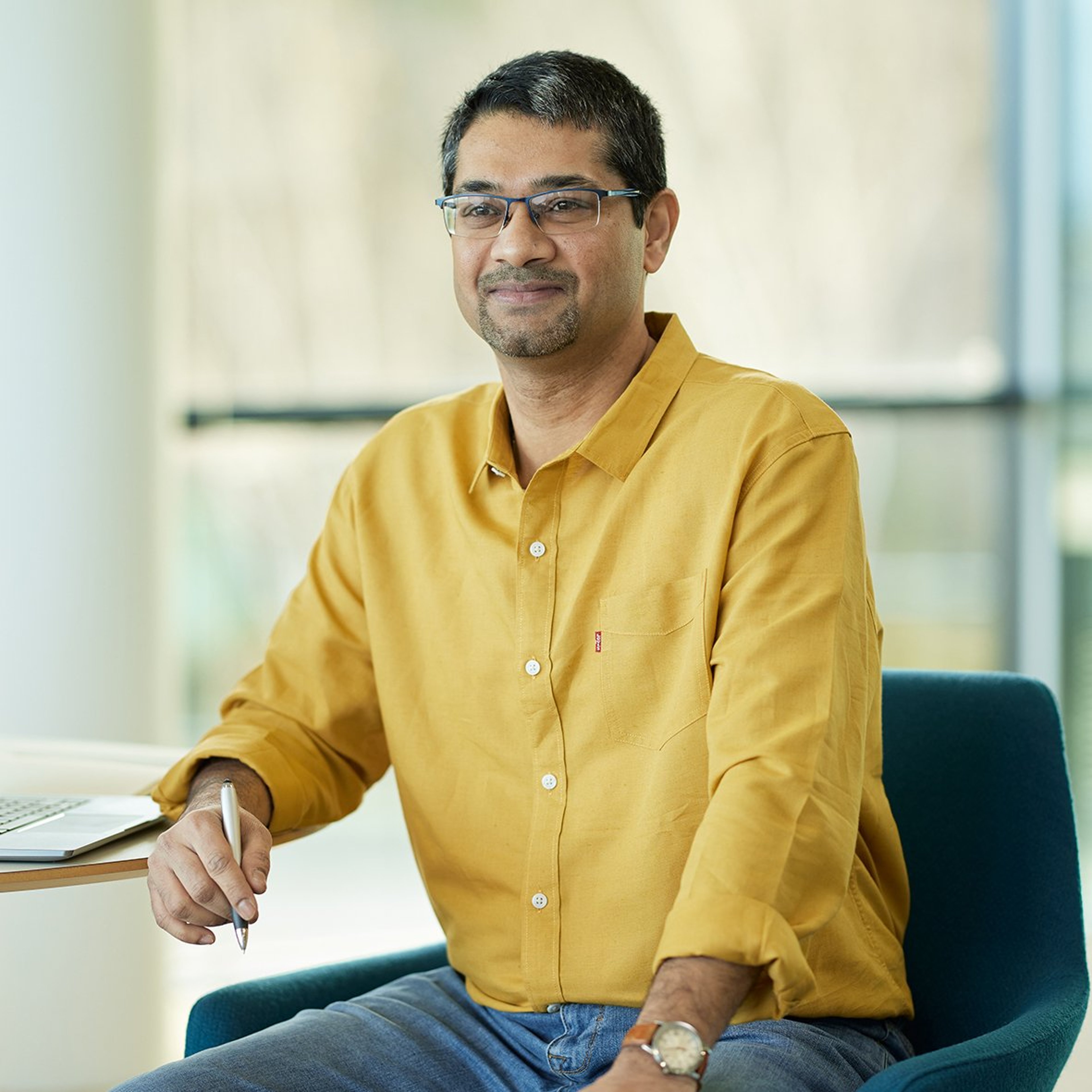
The value of an investment, and any income from it, can fall as well as rise and investors may not get back the amount invested.
Under the Radar
International Smaller Companies
As competitive advantages go, the ability to run faster than the competition seems like a good starting point, particularly if you are an animal in the African bush. You might think it would follow that the fastest land animal, the cheetah – which is able to reach speeds close to 60mph and to accelerate at a rate four times that of Usain Bolt – would always catch its prey. Not so: the predator is successful only 40–50 per cent of the time. Its prey, the impala has the advantage because its slower speed enables it to make sudden turns at the last second, out-manoeuvring the cheetah. The moral of the story: never assume you know, at first glance, who or what has the advantage.
This is equally applicable to investing in equities, where it is easy to make lazy assumptions regarding competitive edges and their likely duration. Companies with a strong and sustainable competitive edge tend to generate superior returns for shareholders over long periods of time. That’s why identifying companies with a durable edge is a vital part of our stock-picking process and an indispensable element within our Radar framework.
Ascertaining exactly what a company’s competitive edge is, however, seldom straightforward. We hope this paper will give you some insight into how we think about the topic and why we believe we can add a lot of value to the research process by approaching it in fresh ways.
I still haven’t found what I’m looking for
At its simplest, a competitive edge is an attribute that allows a company to outperform its competitors. Michael Porter, the celebrated Harvard Business School academic and a widely-recognised authority on this subject, suggests that a company can build a competitive edge in one of two ways: either by being the lowest-cost player in an industry or by making itself stand out from its peers, either through superior products/services or a unique business model.
We don’t think it is that simple. In our experience, competitive edge is seldom down to a single attribute. Often, it is the result of several key attributes coming together over time. In most cases, these attributes are intangible, softer factors, such as what motivates management or the company’s ability to develop brands or take customers in new directions. This is not something that traditional investment managers are good at identifying.
Thinking outside the box
Conventional research nowadays emphasises quantifying every possible aspect of a company. As a result, for many, investment has been reduced to counting the sum of parts. For us, this seems counter intuitive. Not only is it inherently backward looking and reductionist, but it does not cope well in the era of disruption and rapid change in which we live.
We prefer to take a more holistic approach, by which we mean that we believe the whole is greater than the sum of parts. The magic happens when the key attributes come together and create sparks. Discovering these attributes requires imagination and creativity, not just the ability to read accounts, annual reports or even sell-side reports. This is an area where we believe we can add a lot of value through our research process, which emphasises creativity and looking for the unseen connection points that will drive a company’s competitive edge over time. In practice, this might mean fostering connections with non-financial sources, including academics, authors and those attending industry conferences – anyone with a considered view on the world that can expand our thinking and keep us curious.
Retaining our curiosity helps us to be open-minded about the various elements that might come together to give a company an edge over its peers. It helps us to remain future-orientated and look beyond the immediate and obvious when developing a view on the likely future course of the company and the industry it operates in.
The magic happens when the key attributes come together and create sparks.

Nothing to see
This is particularly important because, in most cases, we see companies being successful over long periods of time despite not having any ‘apparent’ competitive edge. IRISO Electronics is one such example. It makes connectors that are used to link various electronic components within cars.
On the face of it, there’s nothing exciting about making connectors and there are numerous companies globally operating in this space. Despite this, IRISO has built an impressive long-term track record of success. We think this has been possible due to the company’s intense focus on its core business (unlike its more diversified peers), as well as management’s ability to re-orient the business towards emerging growth areas. IRISO historically generated the bulk of its sales by selling to manufacturers of in-car entertainment equipment. As this area matured, they seized the opportunity afforded by the advent of autonomous cars and have since turned this market into a significant part of their overall business. But it hasn’t stopped there. The company has developed connectors that go into robots, another sign of management’s ability to identify and exploit growth opportunities in new areas as they arise.
Change is the only constant
Investors who are steered by short-term considerations are susceptible to taking a company’s prospects as read because they tend to extrapolate past performance into the future. As a result, change often blindsides them.
Raksul is a classic example that illustrates the perils of relying solely on recent history and ignoring the potential for change. It is a case study in how getting fixated with the current shape of a business can often blindside analysts to the considerable potential for positive and dynamic change over time. This is a young Japanese company that was established in 2009 by a former management consultant still in his 30s. It started life as an online platform, connecting a network of small and medium sized printing companies with clients that have printing requirements. Operating a cloud-based platform, Raksul continues to grow rapidly but over time, thanks to the dynamism and opportunism of its young management team, they have identified other areas that are ripe for similar levels of disruption. Borrowing from its playbook in the online printing business where the company is effectively utilizing spare capacity at its printing partners to offer on-demand printing services at a very lost cost, Raksul is now attempting to disrupt the Japanese logistics and advertising sectors in a similar vein. They now offer on-demand logistics (à la Uber for logistics) and low-cost real-time advertising services for clients that have resulted in a significant expansion of their addressable market and accelerated their growth.
Despite such clear and dramatic change, the market and the sell-side still harbours a static view of Raksul and hence struggle to articulate its competitive edge. We believe businesses like Raksul have the innate ability to grow rapidly for many years. Their focus, adaptability and nimble business model gives them a level of scalability that we believe will be difficult for potential competitors to match.
In the context of our research framework, we openly acknowledge and embrace the fact that change is the only constant in a world of rapid technological advances. This also means that the concept of a ‘sustainable competitive edge’ needs refinement. We believe that sustainability of an edge is inextricably linked with how adaptable a company is. By focusing on identifying and investing in companies that have the ability to ride out changes, we are able to unearth the small subset within our investable universe of smaller companies that will be able to extend and solidify their competitive edge over long periods of time.
We believe that sustainability of an edge is inextricably linked with how adaptable a company is.
Dealing with extremes
Assessing competitive edge is especially tricky for young companies that may not have a track record for us to rely on. An extreme example would be biotech companies that make little or no profit for several years and where the probability of long-term success is small. Various studies have shown that the success rate of drug programmes that make it from Phase 1 through to approval is as low as five to ten per cent. Even for the drugs that do make it to market, it takes years to get there. So how do we even begin to define the competitive edge of a biotech company with the odds stacked against it right from the outset?
In such circumstances, we think that it is important to focus on identifying the building blocks of a future competitive edge rather than adopt a static approach that places a lot of emphasis on the current state of such businesses. Healios is one of Japan’s leading biotech companies. It is working with induced pluripotent stem cells (IPSC) to develop a cure for age-related blindness (AMD). There are few expert practitioners of IPSC globally and Healios is among the more advanced players in this area. At present, there is no cure for AMD and there are many patients who could benefit from a breakthrough treatment such as the one that Healios is developing. It is also an area that, unlike oncology for instance, is not crowded with competing medical solutions.
In essence, Healios is developing an actual cure for an unmet medical need rather than a clone of existing therapies that only serve to delay the onset of the condition. It is run by its young and dynamic founder, who is also an ophthalmologist and has prior experience of developing successful treatments for optical ailments. So, despite the low probability of success for its novel therapy, the above-mentioned attributes could form the building blocks of an edge for Healios in the future should its drug program be successful.
A new wave
One trend that we are observing is the rise in small, entrepreneurial companies established by their founders to solve a big problem that they may have encountered personally. The result of this is an increasing number of fast-growing businesses that are creating new markets. While this is an exciting development for us as long-term growth investors, it also makes the task of determining the competitive edge of such companies challenging. Because of the relative immaturity of such businesses, we believe it is important to focus on the intangible sources that, when taken together, give rise to a meaningful competitive edge.
Bengo4.com is an example of a young company that was set up by its founder following a difficult personal experience. This is Japan’s only online portal that connects lawyers with people looking for legal advice. Following a road accident, the founder found it extremely difficult to hire an experienced lawyer to deal with his case and hence decided to start Bengo4.com to make navigating Japan’s inefficient services sector easier. Since 2005, the company has successfully created a new market in Japan for online legal advice and has begun to monetise this in recent years.
We think the company’s competitive edge stems from a combination of being run by a visionary founder/CEO and a unique business model built around a compelling product offering. These are qualitative factors and hence difficult to ‘model’ for conventional analysts. with over 21,000 lawyers in Japan already members, we believe that the company should eventually build a strong and ultimately quantifiable scale advantage over potential competitors.
One trend that we are observing is the rise in small, entrepreneurial companies established by their founders to solve a big problem that they may have encountered personally.
“Sometimes freedom from normal rules is what gives you competitive advantage”
Looking to the future
For an analyst, clearly articulating the competitive edge of a company is perhaps the most challenging task. As the examples above illustrate, there isn’t a ‘one-size-fits-all’ approach that we can take when assessing a company’s edge, simply because no two companies are the same. In most cases, businesses derive their competitive edge from a collection of seemingly mundane and intangible characteristics that are downplayed by conventional analysis, mostly due to intellectual laziness. We believe that it is vital to have the mental flexibility to think creatively about competitive advantage and focus on the building blocks of what might constitute a strong and sustainable edge in the future rather than anchor to the present.
Risk Factors
The views expressed in this article are those of the International Smaller Companies team and should not be considered as advice or a recommendation to buy, sell or hold a particular investment. They reflect personal opinion and should not be taken as statements of fact nor should any reliance be placed on them when making investment decisions.
This communication was produced and approved in March 2022 and has not been updated subsequently. It represents views held at the time of writing and may not reflect current thinking.
Potential for Profit and Loss
All investment strategies have the potential for profit and loss, your or your clients’ capital may be at risk. Past performance is not a guide to future returns.
Stock Examples
Any stock examples and images used in this article are not intended to represent recommendations to buy or sell, neither is it implied that they will prove profitable in the future. It is not known whether they will feature in any future portfolio produced by us. Any individual examples will represent only a small part of the overall portfolio and are inserted purely to help illustrate our investment style.
This communication contains information on investments which does not constitute independent research. Accordingly, it is not subject to the protections afforded to independent research, but is classified as advertising under Art 68 of the Financial Services Act (‘FinSA’) and Baillie Gifford and its staff may have dealt in the investments concerned.
All information is sourced from Baillie Gifford & Co and is current unless otherwise stated.
The images used in this article are for illustrative purposes only.
Important Information
Baillie Gifford & Co and Baillie Gifford & Co Limited are authorised and regulated by the Financial Conduct Authority (FCA). Baillie Gifford & Co Limited is an Authorised Corporate Director of OEICs.
Baillie Gifford Overseas Limited provides investment management and advisory services to non-UK Professional/Institutional clients only. Baillie Gifford Overseas Limited is wholly owned by Baillie Gifford & Co. Baillie Gifford & Co and Baillie Gifford Overseas Limited are authorised and regulated by the FCA in the UK.
Persons resident or domiciled outside the UK should consult with their professional advisers as to whether they require any governmental or other consents in order to enable them to invest, and with their tax advisers for advice relevant to their own particular circumstances.
Financial Intermediaries
This communication is suitable for use of financial intermediaries. Financial intermediaries are solely responsible for any further distribution and Baillie Gifford takes no responsibility for the reliance on this document by any other person who did not receive this document directly from Baillie Gifford.
Europe
Baillie Gifford Investment Management (Europe) Limited provides investment management and advisory services to European (excluding UK) clients. It was incorporated in Ireland in May 2018 and is authorised by the Central Bank of Ireland. Through its MiFID passport, it has established Baillie Gifford Investment Management (Europe) Limited (Frankfurt Branch) to market its investment management and advisory services and distribute Baillie Gifford Worldwide Funds plc in Germany. Similarly, it has established Baillie Gifford Investment Management (Europe) Limited (Amsterdam Branch) to market its investment management and advisory services and distribute Baillie Gifford Worldwide Funds plc in The Netherlands. Baillie Gifford Investment Management (Europe) Limited also has a representative office in Zurich, Switzerland pursuant to Art. 58 of the Federal Act on Financial Institutions (‘FinIA’). It does not constitute a branch and therefore does not have authority to commit Baillie Gifford Investment Management (Europe) Limited. It is the intention to ask for the authorisation by the Swiss Financial Market Supervisory Authority (FINMA) to maintain this representative office of a foreign asset manager of collective assets in Switzerland pursuant to the applicable transitional provisions of FinIA. Baillie Gifford Investment Management (Europe) Limited is a wholly owned subsidiary of Baillie Gifford Overseas Limited, which is wholly owned by Baillie Gifford & Co.
Hong Kong
Baillie Gifford Asia (Hong Kong) Limited
柏基亞洲(香港)有限公司 is wholly owned by Baillie Gifford Overseas Limited and holds a Type 1 and a Type 2 license from the Securities & Futures Commission of Hong Kong to market and distribute Baillie Gifford’s range of collective investment schemes to professional investors in Hong Kong. Baillie Gifford Asia (Hong Kong) Limited
柏基亞洲(香港)有限公司 can be contacted at Suites 2713–2715, Two International Finance Centre, 8 Finance Street, Central, Hong Kong. Telephone +852 3756 5700.
South Korea
Baillie Gifford Overseas Limited is licensed with the Financial Services Commission in South Korea as a cross border Discretionary Investment Manager and Non-discretionary Investment Adviser.
Japan
Mitsubishi UFJ Baillie Gifford Asset Management Limited (‘MUBGAM’) is a joint venture company between Mitsubishi UFJ Trust & Banking Corporation and Baillie Gifford Overseas Limited. MUBGAM is authorised and regulated by the Financial Conduct Authority.
Australia
Baillie Gifford Overseas Limited (ARBN 118 567 178) is registered as a foreign company under the Corporations Act 2001 (Cth) and holds Foreign Australian Financial Services Licence No 528911. This material is provided to you on the basis that you are a ‘wholesale client’ within the meaning of section 761G of the Corporations Act 2001 (Cth) (‘Corporations Act’). Please advise Baillie Gifford Overseas Limited immediately if you are not a wholesale client. In no circumstances may this material be made available to a ‘retail client’ within the meaning of section 761G of the Corporations Act.
This material contains general information only. It does not take into account any person’s objectives, financial situation or needs.
South Africa
Baillie Gifford Overseas Limited is registered as a Foreign Financial Services Provider with the Financial Sector Conduct Authority in South Africa.
North America
Baillie Gifford International LLC is wholly owned by Baillie Gifford Overseas Limited; it was formed in Delaware in 2005 and is registered with the SEC. It is the legal entity through which Baillie Gifford Overseas Limited provides client service and marketing functions in North America. Baillie Gifford Overseas Limited is registered with the SEC in the United States of America.
The Manager is not resident in Canada, its head office and principal place of business is in Edinburgh, Scotland. Baillie Gifford Overseas Limited is regulated in Canada as a portfolio manager and exempt market dealer with the Ontario Securities Commission (‘OSC’). Its portfolio manager licence is currently passported into Alberta, Quebec, Saskatchewan, Manitoba and Newfoundland & Labrador whereas the exempt market dealer licence is passported across all Canadian provinces and territories. Baillie Gifford International LLC is regulated by the OSC as an exempt market and its licence is passported across all Canadian provinces and territories. Baillie Gifford Investment Management (Europe) Limited (‘BGE’) relies on the International Investment Fund Manager Exemption in the provinces of Ontario and Quebec.
Oman
Baillie Gifford Overseas Limited (‘BGO’) neither has a registered business presence nor a representative office in Oman and does not undertake banking business or provide financial services in Oman. Consequently, BGO is not regulated by either the Central Bank of Oman or Oman’s Capital Market Authority. No authorization, licence or approval has been received from the Capital Market Authority of Oman or any other regulatory authority in Oman, to provide such advice or service within Oman. BGO does not solicit business in Oman and does not market, offer, sell or distribute any financial or investment products or services in Oman and no subscription to any securities, products or financial services may or will be consummated within Oman. The recipient of this material represents that it is a financial institution or a sophisticated investor (as described in Article 139 of the Executive Regulations of the Capital Market Law) and that its officers/employees have such experience in business and financial matters that they are capable of evaluating the merits and risks of investments.
Qatar
The materials contained herein are not intended to constitute an offer or provision of investment management, investment and advisory services or other financial services under the laws of Qatar. The services have not been and will not be authorised by the Qatar Financial Markets Authority, the Qatar Financial Centre Regulatory Authority or the Qatar Central Bank in accordance with their regulations or any other regulations in Qatar.
Israel
Baillie Gifford Overseas is not licensed under Israel’s Regulation of Investment Advising, Investment Marketing and Portfolio Management Law, 5755-1995 (the Advice Law) and does not carry insurance pursuant to the Advice Law. This material is only intended for those categories of Israeli residents who are qualified clients listed on the First Addendum to the Advice Law.
Ref 22041 10011307





